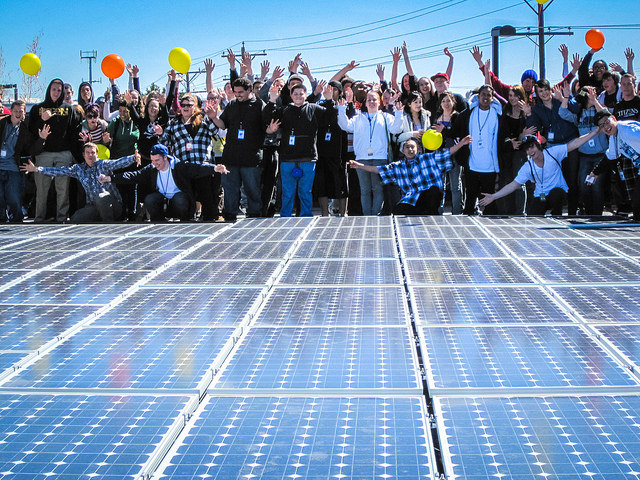GreenTech Media, April 21, 2014
California is well on its way to reaching its goal of 1 million solar roofs. Earlier this month, Pacific Gas & Electric announced it has over 100,000 customers generating solar power — the most of any utility in America, accounting for a quarter of all rooftop solar systems in the country.
As of April, PG&E has 115,000 solar customers with a combined total of just over 1,000 megawatts of rooftop solar. This number is double what it was at the end of 2011 and represents half of all solar in California. The total includes 6,000 non-residential customers. PG&E has an additional 4,500 megawatts of utility-scale solar on its system.
According to recent filings, 22.5 percent of PG&E’s power came from renewable resources in 2013. The utility expects solar to make up 40 percentof its renewable portfolio by 2020, when it will be obligated to get one-third of its power from renewables. Another third will come from big hydro and nuclear.
The pace of growth does not appear to be slowing. Customers are adding 2,500 systems per month, and the utility has streamlined the application process to ensure a five-day turnaround in getting a system interconnected.
Almost all of these customer-owned systems operate under net metering rules. But the future of net metering is uncertain in California. Last year, the legislature approved AB 327, sponsored by Assembly member Henry Perea (D-Fresno). AB 327 directs the CPUC to design a “successor tariff” to replace net metering.
…snip….
An analysis by John Farrell of the Institute for Local Self Reliance based on PG&E tariffs calculated that applying a time-of-use rate to net metering can increase the value to the customer by as much as 250 percent, compared to flat rates.
PG&E says approximately 40 percent of its residential solar customers and nearly all of its non-residential solar customers are on TOU rates combined with net metering.
PG&E’s Eisenhauer was especially supportive of community solar, which PG&Ehad proposed before it was mandated by the legislature under SB 43 in 2013. The law requires utilities to procure 600 megawatts of “shared” solar, where the output of the system is credited against electricity consumption. Shared solar is intended for customers who can’t site solar on their roofs, or who don’t own their roof, such as renters in apartment buildings.
“Community solar is something we are really advocating. We want to make opportunities for all our customers to enjoy solar,” he said.
The rules for community solar are still under construction at the commission, with a decision expected by summer. PG&E expects to offer a “New Green Option” starting in 2015.
“The good news is that rooftop solar has come of age,” said PG&E’s Helen Burt. “And with installation costs falling, the pace of adoption is quickening.”
But the future still hinges on critical regulatory decisions pending in San Francisco.




